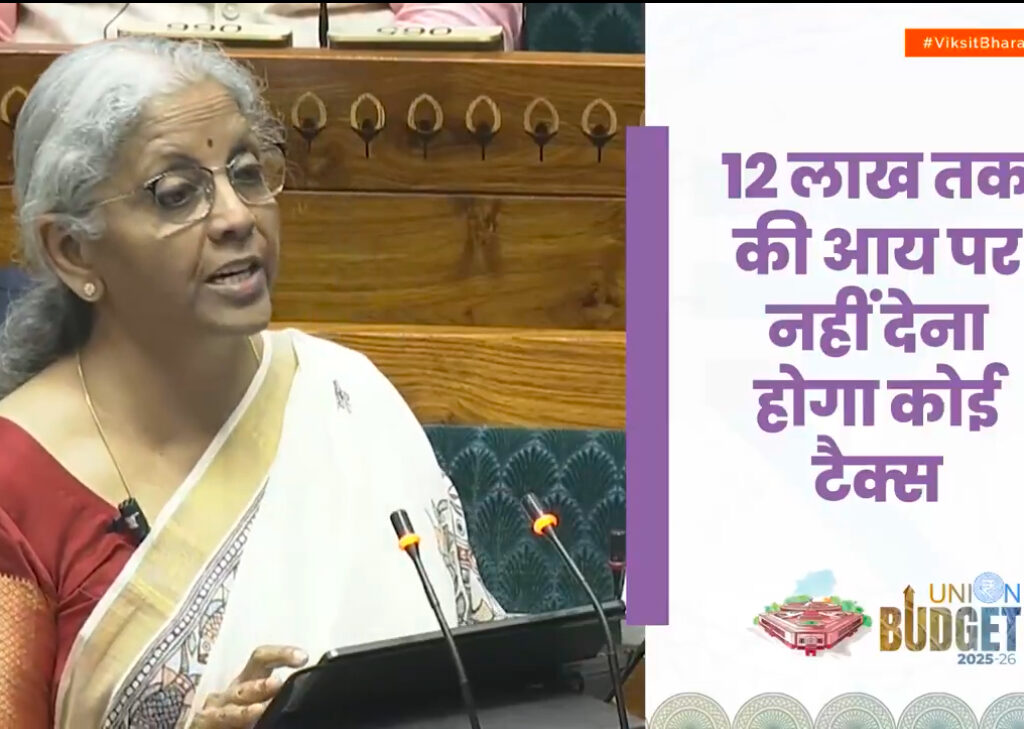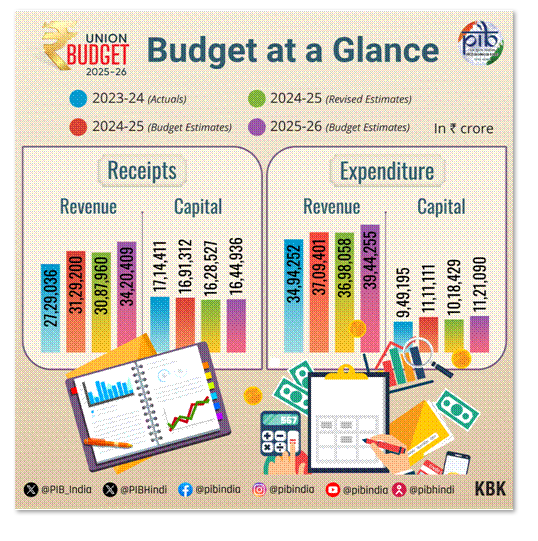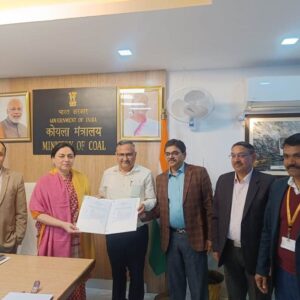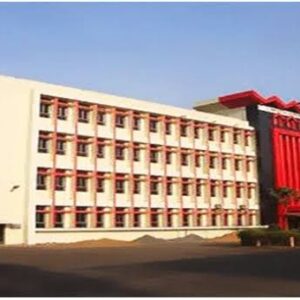
TFP Bureau, New Delhi, February 1, 2025 – In a landmark move to provide relief to the middle class, Finance Minister Nirmala Sitharaman announced that income up to ₹12 lakh will now be tax-free under the new tax regime. Additionally, salaried individuals can avail of standard deductions, effectively making income up to ₹12.75 lakh tax-free. The move aims to enhance household savings and boost consumption across the country.
The Finance Minister emphasized justice and simplification in the new Income Tax Bill, set to be introduced next week. The government will implement a “trust first, then investigate” approach in tax matters. Furthermore, higher TDS provisions will continue for non-PAN cases, and the time limit for filing updated income tax returns has been increased from two to four years.
Key Tax Reforms at a Glance
- Revised tax slabs:
- 0-4 lakh: No tax
- 4-8 lakh: 5%
- 8-12 lakh: 10%
- 12-16 lakh: 15%
- 16-20 lakh: 20%
- 20-24 lakh: 25%
- TDS exemptions increased for senior citizens (₹50,000 to ₹1 lakh) and rental income (₹6 lakh).
Economic Growth and Employment-Focused Measures
Recognizing the four pillars of economic growth—agriculture, MSMEs, investment, and exports—the budget outlines key measures to drive development:
- ₹1 lakh crore Urban Challenge Fund to develop cities as economic hubs.
- ₹20,000 crore allocation for private sector-driven R&D and innovation.
- A National Manufacturing Mission to strengthen small, medium, and large industries under “Make in India.”
- MSME credit guarantee limit raised from ₹5 crore to ₹10 crore for enhanced business financing.
Agriculture and Rural Development Initiatives
- ‘PM Dhan-Dhaanya Krishi Yojana’ to support 1.7 crore farmers in 100 low-agricultural-productivity districts.
- “Mission for Aatmanirbharta in Pulses” to boost production of tur, urad, and masoor dal.
- Loans up to ₹5 lakh under Kisan Credit Card (KCC) with modified interest subvention scheme.
Boost for Education, Technology, and Healthcare
- 50,000 Atal Tinkering Labs to be established in government schools over the next five years.
- ₹500 crore Centre of Excellence in Artificial Intelligence for education.
- Gig workers to get identity cards, registration on e-Shram portal, and healthcare under PM Jan Arogya Yojana.
Infrastructure and Energy Investments
- Nuclear Energy Mission launched with a ₹20,000 crore investment in small modular reactors.
- ₹15,000 crore SWAMIH fund to complete 1 lakh stalled housing units.
- Modified UDAN Scheme to enhance air connectivity to 120 new regional destinations.

Foreign Investment and Business Reforms
- FDI limit in insurance increased from 74% to 100% to ensure domestic reinvestment of insurance funds.
- Jan Vishwas Bill 2.0 to decriminalize over 100 provisions across various laws, promoting ease of doing business.
Customs and Manufacturing Boost
- Basic Customs Duty (BCD) exemptions for 36 life-saving drugs for cancer and rare diseases.
- Import duties on battery components reduced to promote domestic EV and mobile battery production.
- BCD on shipbuilding materials exempted for 10 years to encourage maritime industry growth.
The Union Budget 2025-26 sets a fiscal deficit target of 4.8% for FY-25, with a goal to bring it down to 4.4% in FY-26. It reflects the government’s commitment to economic expansion, job creation, and financial stability, ensuring sustained growth across multiple sectors







